Table of Contents
Pain management nursing is a crucial aspect of patient care, demanding specialized knowledge, skills, and compassion. Writing a compelling and informative paper on this subject requires a meticulous approach, weaving together evidence-based practice, clinical expertise, and the human experience of pain.
This article aims to guide you through the process of crafting a strong paper on pain management nursing, offering practical advice and addressing common challenges.
Steps to Writing a Pain Management Nursing Paper
1. Choosing Your Topic and Defining Your Scope:
The first step is to choose a specific and relevant topic within the broad field of pain management nursing. Consider your interests, available resources, and the potential audience for your paper.
Here are some potential avenues to explore:
- Specific Pain Conditions: Focusing on a particular type of pain, like chronic pain, cancer pain, or postoperative pain, allows for a deeper dive into the intricacies of management.
- Pain Management Modalities: Explore a specific pain management technique like non-pharmacological interventions (e.g., massage therapy, acupuncture), pharmacological therapies (e.g., opioids, NSAIDs), or innovative methods like nerve blocks or spinal cord stimulation.
- Patient Populations: Focus on a specific patient population, such as children, older adults, or individuals with specific medical conditions (e.g., diabetes, HIV/AIDS).
- Ethical and Legal Considerations: Analyze the ethical and legal challenges of pain management nursing, such as opioid prescribing practices or patient autonomy in decision-making.
2. Conducting Thorough Research:
After selecting your topic, embark on comprehensive research to build a strong foundation for your paper.
Key Resources:
- Scholarly Databases: PubMed, CINAHL, Nursing Papers, Scopus, and Google Scholar provide access to peer-reviewed journal articles, systematic reviews, and clinical guidelines.
- Professional Organizations: Websites of organizations like the American Pain Society (APS), the American Nurses Association (ANA), and the International Association for the Study of Pain (IASP) offer valuable information and resources.
- Clinical Practice Guidelines: Consult established guidelines like those published by the National Comprehensive Cancer Network (NCCN) or the American College of Physicians (ACP).
- Government Websites: Explore websites of the National Institutes of Health (NIH), the Centers for Disease Control and Prevention (CDC), and the Food and Drug Administration (FDA) for information on pain research and regulatory updates.
3. Developing a Strong Thesis Statement:
A clear and concise thesis statement is the backbone of your paper. It encapsulates the central argument you aim to convey.
Here are some examples of thesis statements for pain management nursing papers:
- “Implementing multimodal pain management strategies is crucial for optimizing pain relief and improving patient outcomes.”
- “Nurses play a vital role in advocating for patient-centered pain management, considering individual needs and preferences.”
- “The use of non-pharmacological interventions in conjunction with pharmacological therapies can significantly reduce opioid reliance in patients with chronic pain.”
4. Structuring Your Paper for Clarity and Impact:
Organize your paper logically to ensure that your message is effectively communicated.
A typical structure for a pain management nursing paper might include:
- Introduction: Briefly introduce the topic, state your thesis, and provide an overview of the paper’s structure.
- Literature Review: Synthesize relevant research findings and provide a comprehensive overview of current knowledge in the area.
- Methodology: (If applicable) Describe the research methods used if your paper presents an original study.
- Results: (If applicable) Present the findings of your research in a clear and concise manner.
- Discussion: Analyze and interpret your findings, drawing connections to existing literature, highlighting implications for practice, and proposing future research directions.
- Conclusion: Summarize your main points, restate your thesis, and provide concluding remarks.
- References: List all sources cited in your paper according to the chosen citation style (e.g., APA, MLA).
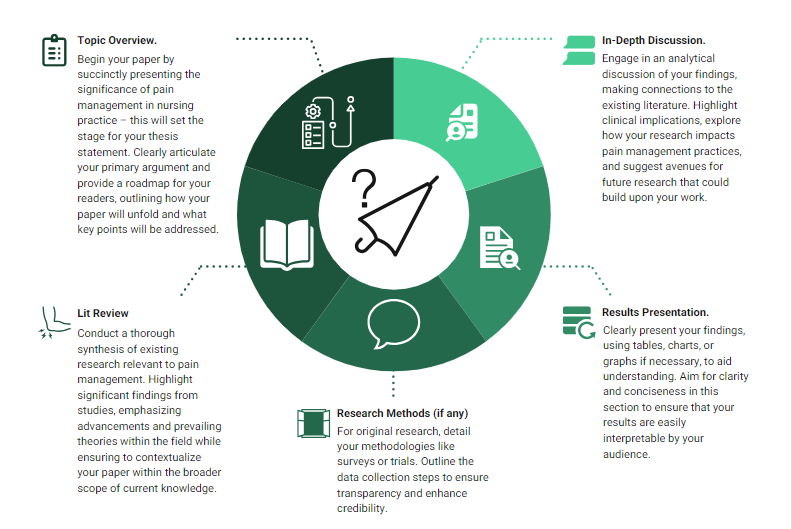
5. Crafting Compelling Content:
Writing a compelling paper about pain management nursing requires a balance of scientific accuracy, clinical relevance, and compassionate understanding.
Here are some tips for enhancing your writing:
- Use clear and concise language: Avoid jargon and technical terms that may be unfamiliar to your audience.
- Provide examples and case studies: Illustrate concepts with real-world scenarios to make your writing relatable and engaging.
- Include patient perspectives: Incorporate patient narratives and stories to humanize the experience of pain and highlight the impact of effective pain management.
- Emphasize the role of the nurse: Demonstrate how pain management nurses contribute to patient care, advocate for their needs, and improve quality of life.
6. Addressing Common Challenges in Pain Management Nursing:
Writing a paper on pain management nursing often involves tackling complex challenges, such as:
- Opioid Crisis: Analyze the ethical and practical implications of opioid prescribing, explore alternative pain management strategies, and advocate for safer and more effective practices.
- Individualized Pain Management: Emphasize the need for tailored pain management plans, considering patient preferences, cultural beliefs, and socioeconomic factors.
- Communication and Advocacy: Discuss the crucial role of nurses in facilitating open communication with patients, advocating for their pain relief, and promoting shared decision-making.
7. Ensuring Accuracy and Ethical Considerations:
Maintaining accuracy and adhering to ethical guidelines are paramount in pain management nursing.
- Fact-checking and referencing: Carefully verify all information and cite sources appropriately to maintain credibility.
- Patient confidentiality: Ensure that patient privacy is protected by avoiding the use of identifiable information and obtaining informed consent when sharing patient stories.
- Bias and objectivity: Strive for neutrality and avoid promoting personal opinions or biases.
8. Writing for Different Audiences:
Consider your target audience and tailor your writing accordingly.
Here are some examples of potential audiences:
- Healthcare professionals: Use technical language and focus on evidence-based practice and clinical application.
- Patients and families: Emphasize patient-centered care, explain pain management strategies clearly, and provide resources for further information.
- Policymakers and researchers: Focus on policy implications, research gaps, and future research directions.
9. Proofreading and Editing:
After completing your paper, take the time to proofread and edit meticulously.
Key areas to focus on:
- Grammar and spelling: Ensure accurate grammar, punctuation, and spelling.
- Clarity and conciseness: Make sure your writing is clear, concise, and easy to understand.
- Structure and flow: Check for logical flow and smooth transitions between paragraphs and sections.
- Style and tone: Maintain a professional and objective tone throughout your paper.
10. Submitting Your Paper:
Finally, carefully follow the submission guidelines of the chosen journal or conference.
Key considerations:
- Formatting and style: Adhere to the journal’s specific formatting and citation style.
- Word count and submission deadline: Submit your paper within the specified word count and by the designated deadline.
- Peer review process: Understand that your paper will undergo a peer review process, where experts in the field will evaluate its quality and rigor.
Avoiding Common Mistakes in Pain Management Nursing Papers
The field of pain management nursing is complex and dynamic, demanding a nuanced understanding of both clinical practice and research. While writing a paper on this topic can be rewarding, it’s easy to fall into common traps that can hinder the quality and impact of your work. Here are some key pitfalls to avoid and strategies for crafting a strong pain management nursing paper:
1. Lack of Clear Focus:
A common error is failing to define a specific research question or objective. A well-defined focus provides structure and clarity for your paper. Before you begin writing, ask yourself: What specific aspect of pain management nursing are you exploring? What are the key arguments or themes you want to address? A focused approach will help you stay on track and ensure your paper is both concise and impactful.
2. Ignoring the Literature Review:
A comprehensive literature review is essential for any pain management nursing paper. It allows you to demonstrate your understanding of the current state of research, identify gaps in knowledge, and provide context for your own findings or arguments. Don’t simply list references – critically analyze each source, drawing connections between them and highlighting key debates or controversies within the field.
3. Neglecting the Impact of Culture and Diversity:
Pain management is highly personal and influenced by cultural beliefs, values, and personal experiences. Recognizing this diversity is crucial for developing effective pain management strategies. When writing a paper, ensure you consider the cultural contexts of your patients and the potential impact of their cultural background on their experience of pain and their preferences for treatment.
4. Overlooking Ethical Considerations:
Pain management nursing frequently involves ethical dilemmas, such as managing opioid use or balancing patient autonomy with the need for safety. Your paper should address ethical considerations, demonstrating an awareness of the complexities involved and offering ethical solutions. For instance, you could explore the ethical implications of different pain management techniques or discuss the importance of patient consent and informed decision-making.
5. Failing to Ground Your Paper in Evidence-Based Practice:
Any claim you make in a pain management nursing paper must be supported by credible evidence. Rely on high-quality research studies, clinical guidelines, and professional consensus statements to bolster your arguments. Avoid relying on anecdotal evidence or unsupported personal opinions.
6. Ignoring the Importance of Patient-Centered Care:
The heart of pain management nursing lies in patient-centered care. Your paper should highlight the importance of individualizing treatment plans, considering patients’ unique needs and preferences, and actively involving them in their care. Showcase how pain management nursing practices promote patient empowerment and self-management.
7. Lack of Practical Implications:
While a strong theoretical foundation is important, a truly impactful paper connects research to real-world practice. Consider the practical implications of your findings for pain management nursing. Discuss potential applications, recommendations for practice, and areas for further research.
8. Poor Writing Style and Grammar:
A clear and concise writing style is essential for conveying your ideas effectively. Pay attention to grammar, punctuation, and sentence structure. Avoid jargon and ensure your paper is free of errors. Consider using a grammar checker and asking a colleague to review your work for clarity and readability.
9. Insufficient Use of Visual Aids:
Visual aids like tables, figures, and graphs can enhance the clarity and impact of your paper. Use them judiciously to present data effectively, illustrate key concepts, or summarize complex information.
10. Neglecting to Cite Sources Properly:
Accurate and consistent citation is crucial for maintaining academic integrity. Follow a recognized citation style and ensure all sources are properly attributed. Failure to do so can be considered plagiarism.
By avoiding these common mistakes and following the tips outlined above, you can craft a strong, impactful pain management nursing paper that contributes to the advancement of knowledge in the field. Remember, a well-written paper is a testament to your commitment to the advancement of pain management nursing and your dedication to providing optimal care for your patients.
Frequently Asked Questions about Pain Management Nursing Papers
Pain management nursing is a specialized field that requires a deep understanding of pain physiology, pharmacological interventions, and non-pharmacological strategies. Writing a paper on this topic can be a daunting task, especially for students new to the field. To help you navigate the process, here are answers to some frequently asked questions:
1. What are the different types of pain management nursing papers?
The type of paper you write will depend on your assignment requirements and your area of interest. Some common types include:
- Literature reviews: These papers synthesize existing research on a specific topic related to pain management nursing, such as the effectiveness of different pain management strategies for specific conditions.
- Case studies: These papers analyze a specific patient case, focusing on the pain management interventions used and their outcomes.
- Research papers: These papers present original research findings on a pain management nursing topic, such as the development of a new intervention or the evaluation of an existing one.
- Clinical practice guidelines: These papers provide recommendations for best practices in pain management nursing, based on evidence from research and clinical experience.
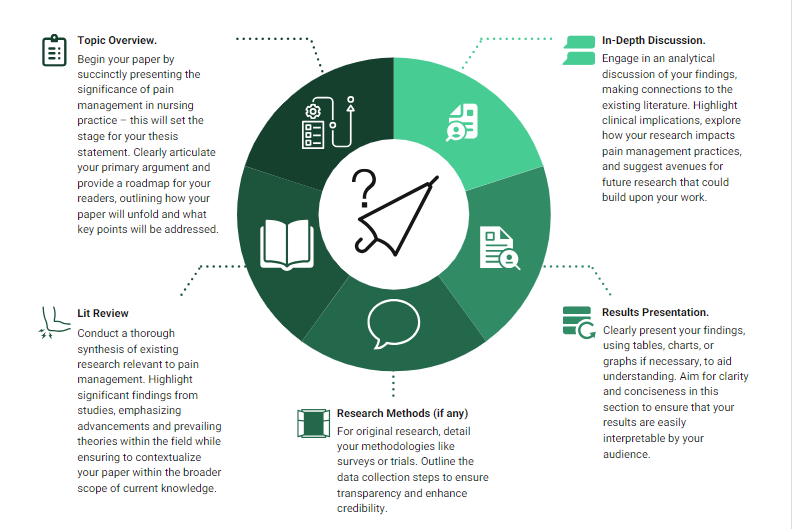
2. How do I choose a topic for my pain management nursing paper?
Choosing a topic for your paper should be driven by your interests and the available resources. Consider these factors:
- Relevance: Select a topic that is relevant to your course of study and the current state of pain management nursing practice.
- Feasibility: Ensure that you have access to the necessary resources, including research articles, patient data, and expert opinions, to support your chosen topic.
- Interest: Choose a topic that genuinely interests you, as this will make the research and writing process more enjoyable.
3. What are the essential components of a pain management nursing paper?
A well-structured pain management nursing paper should include the following sections:
- Introduction: Briefly introduce the topic and its relevance, providing background information and stating the paper’s objectives.
- Literature review: Provide a comprehensive overview of the existing literature on your chosen topic, summarizing key findings and identifying gaps in knowledge.
- Methodology (for research papers): Describe the research design, participants, data collection methods, and data analysis techniques used.
- Results (for research papers): Present the findings of your research, using tables, figures, and statistical analysis where appropriate.
- Discussion: Analyze the results of your research, drawing connections to the existing literature and discussing the implications for clinical practice.
- Conclusion: Summarize the main findings of your paper and highlight the key takeaways for pain management nursing.
- References: Include a comprehensive list of all sources cited in the paper, following a specific referencing style.
4. How can I ensure my pain management nursing paper is well-written and informative?
Writing a clear, concise, and informative paper is crucial for effectively conveying your ideas and arguments. Keep the following tips in mind:
- Clarity and organization: Use headings, subheadings, and bullet points to structure your paper logically and make it easy to read.
- Objectivity: Present your arguments and findings objectively, avoiding bias and personal opinions.
- Evidence-based approach: Support your claims with credible sources, citing them appropriately using a consistent referencing style.
- Conciseness: Avoid unnecessary jargon and repetition, ensuring that your writing is direct and to the point.
- Proofreading and editing: Thoroughly proofread your paper for errors in grammar, spelling, and punctuation before submission.
5. What are some resources for learning more about pain management nursing?
There are numerous resources available for learning more about pain management nursing, including:
- Professional organizations: The American Pain Society (APS) and the International Association for the Study of Pain (IASP) offer extensive information, resources, and networking opportunities for pain management professionals.
- Academic journals: Several journals publish research and clinical practice guidelines related to pain management nursing, such as the Journal of Pain and Symptom Management and the Pain Management Nursing Journal.
- Online databases: Databases such as PubMed, CINAHL, and Cochrane Library provide access to a vast collection of research articles on pain management nursing.
- Continuing education courses: Many institutions offer continuing education courses specifically tailored to pain management nursing, providing practitioners with up-to-date knowledge and skills.
6. What are some common mistakes to avoid when writing a pain management nursing paper?
While writing your paper, it is essential to be aware of common pitfalls to avoid:
- Lack of focus: Avoid trying to cover too much ground in a single paper. Choose a narrow, specific topic and focus your research and writing on that topic.
- Insufficient evidence: Ensure that you adequately support your claims with evidence from credible sources.
- Poor organization: Use headings, subheadings, and bullet points to structure your paper logically and make it easy to read.
- Unclear writing: Avoid jargon and technical terms that may not be understood by your target audience.
- Plagiarism: Always properly cite all sources and avoid plagiarism.
7. What are some tips for getting started on my pain management nursing paper?
Here are some tips for getting started on your pain management nursing paper:
- Start early: Don’t wait until the last minute to begin your research and writing.
- Break down the task: Divide the writing process into smaller, manageable steps, such as choosing a topic, conducting research, outlining your paper, and writing each section.
- Seek support: Don’t hesitate to ask for help from your instructors, classmates, or librarians.
- Stay organized: Use a research management tool or a simple system for organizing your notes, references, and drafts.
Writing a pain management nursing paper can be a valuable learning experience. By understanding the different types of papers, choosing an appropriate topic, and following the essential components, you can craft a well-written and informative paper that contributes to the advancement of pain management nursing knowledge and practice. Remember to always prioritize clarity, objectivity, and evidence-based approaches in your writing.
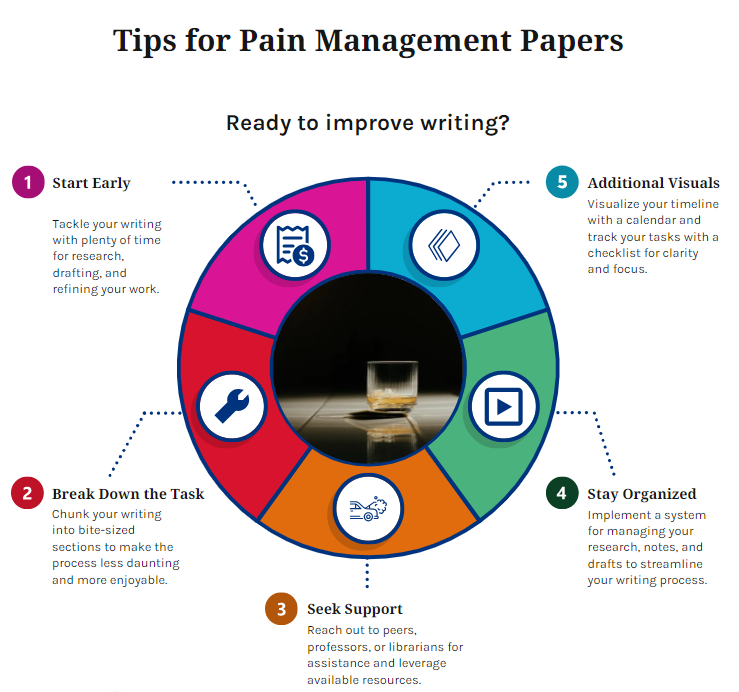
Final Thoughts
Writing a paper about pain management nursing requires meticulous research, careful organization, and a strong understanding of the complexities of pain management. By following the steps outlined in this article, you can craft a compelling and informative paper that contributes to the advancement of pain management nursing and enhances the lives of patients living with pain. Remember, your work has the potential to make a real difference in the lives of patients and their families, as you strive to improve pain management nursing practice and elevate the standard of care.
Get Professional Nursing Paper Writing Assistance
At Nursing Papers, we offer professional nursing paper writing services in a wide range of nursing fields. Our experts can help you with choosing a compelling topic, paper writing, proofreading, editing, formatting and plagiarism removal. Our services cover research papers, essays, case studies and dissertations.






